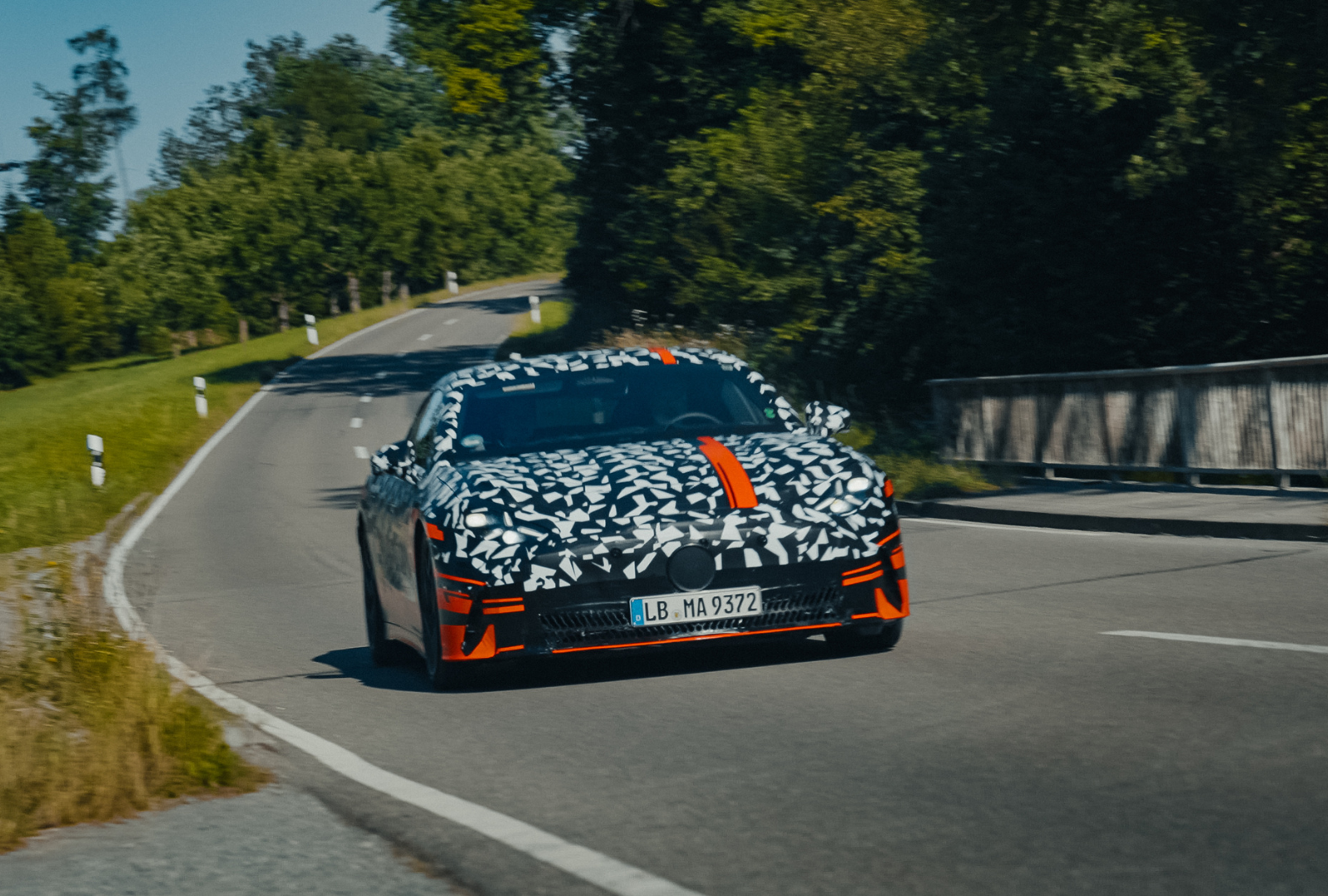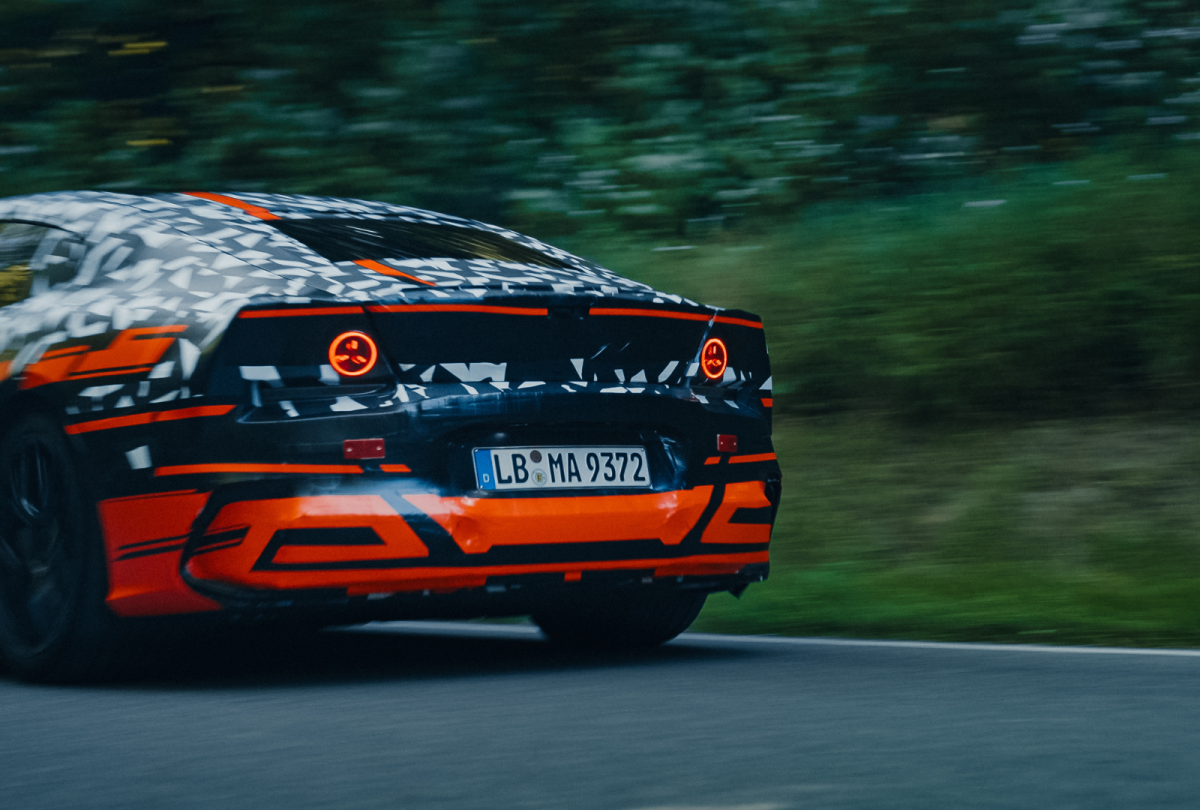
Today’s electric cars sound like vehicles from a sci-fi movie. They emit sounds ranging from ethereal to high-pitched whines to rocket-like noises and simulated flatulence. Those sounds pair with slow motion and simulated shifts to create a new-age ambiance that has many car enthusiasts longing for the sounds of engines past.
As Mercedes-AMG works to create the electric performance cars of the future, the company isn’t keen to fully let go of its gasoline-powered past. Its upcoming C590 battery-electric sedan, built on the new AMG.EA architecture, aims to blend old sounds with new powertrain performance.
“We want to set the benchmark when it comes to electric high-performance driving… We use a speedboat to give a little hint how the electric future will look like when you talk about AMG electric cars,” Michael Schiebe, chairman of the board of management of Mercedes‑AMG, the performance arm of the company, and head of Mercedes‑Benz G‑Class and Mercedes‑Maybach business units, told Newsweek.
“We want to use the car to break some records. This is what it’s all about. Because if you claim yourself to be a performance brand, then you need to beat your competitors on the track. It’s not just the talking, you need to prove it,” he continued.
Mercedes-AMG
AMG’s performance history is storied. “AMG was born on the racetrack. From the beginning, performance has been in our DNA—whether on the track or the road. Every split second matters, and the relentless pursuit of more has fueled us since day one. It’s what drives us to give everything, every single day,” Schiebe said.
The electric era is a new frontier for the company. Though it has been including hybrid technology in its most recent cars, including the C 63 S E Performance and CLE, C590 will be a first-of-its-kind AMG vehicle developed on a platform designed to meet key performance indicators (KPIs) earmarked by AMG rather than leaning on a Mercedes-Benz base then amplifying it, the formula for much of the recent lot of AMG offerings.
“When we are talking about going into the electric era, we always say it’s about continuous performance, because this is the real differentiator,” Schiebe said. “Most of the electric cars will be able to accelerate very fast from zero to 100 or zero to 60 [mph]. It doesn’t matter. This will not be the real differentiator in an electric era in the future.
“When we started with the development of the AMG.EA, we defined certain criteria… we know that we have a very strong heritage when it comes to combustion engines and V8s and so we have a very strong customer base. And customers just love that, especially in the U.S. So if we, as a brand, come up with an electric car, we need to jump even further, because otherwise customers will just say, ‘Why don’t you just stick to your V8s,’ and that is why we put our targets so ambitiously high, and we said we really need to jump really, really far to convince our customers.”
Scheibe linked performance and design to emotion, citing a combination of KPIs that make a performance AMG car a must-buy for the company’s customers. One of the aspects of emotion is sound, an emotional touchpoint that battery-electric vehicles (BEVs) have struggled to wrangle.
For the C590, “we actually created the feeling that our customers are used to from our beloved V8s,” he said. The formula for the C590 combines the sound of previously beloved AMG vehicles with a variety of driving triggers to deliver a fully engaged sensory experience to the driver.
Schiebe pointed out: “If I talk to my engineers driving the car on the Nordschleife, for example, they are not driving the cars and looking to the RPM meter all the time. They are actually driving it by all their senses; they hear the sound of the engine and everything. You need to get feedback to make a fast lap on the racetrack.”

Mercedes-AMG
C590 owners will be able to experience the sounds of V8 and V12 driving in the BEV thanks to technical experts who captured the sound of those engines after blind sound tests that Schiebe compared to wine tasting. “We were standing next to the track, and then some of our young engineers were just driving by back and forth and back and forth, and we were listening,” he said.
After narrowing down the possibilities, engineers went to a specially engineered sound room in Affalterbach, Germany, the home to the brand, and listened to the noise in isolation. “We invested a hell of a lot of hours just to optimize it, because we think it’s of such high importance. It’s not just something that you delegate to one of your engineers and say, ‘Please come up [with this],’ because it is part of our DNA.”
The sounds tested for transfer from the company’s extensive engine portfolio include those from the first-generation Mercedes-AMG GT, Mercedes-AMG C63 and third-generation Mercedes-AMG C-Class (W204), among others.
What Is It Like to Drive?
With ample acceleration on rural roads around Affalterbach, a Mercedes-AMG engineer showcased the capabilities of the forthcoming car. While dressed in camouflage and switched into its Sport+ drive modes, the prototype C590 rode as aggressively as the driver wanted, delivering simulated shifts at what felt like the appropriate torque points, matched with sounds that echoed through the cabin as if there was a real engine under the hood.
Although mostly authentic-sounding, the noise would occasionally sound electronic, particularly around the end notes of a downshift brap.
The experience heightened the senses, much like riding in a gasoline-powered car, though it’s still not a 1:1 match. Will it be enough to persuade drivers to switch from gas to electric? That’s the question.
“Buying an AMG is always an emotional decision. You can go from A to B in a much cheaper [car]. So if you decide for such a car from our brand, it’s an emotional topic, and this is why we invested a lot of attention, resources and money to make those cars really emotional,” Schiebe said.
Mercedes-AMG intends to unveil the production version of the C590 soon.
